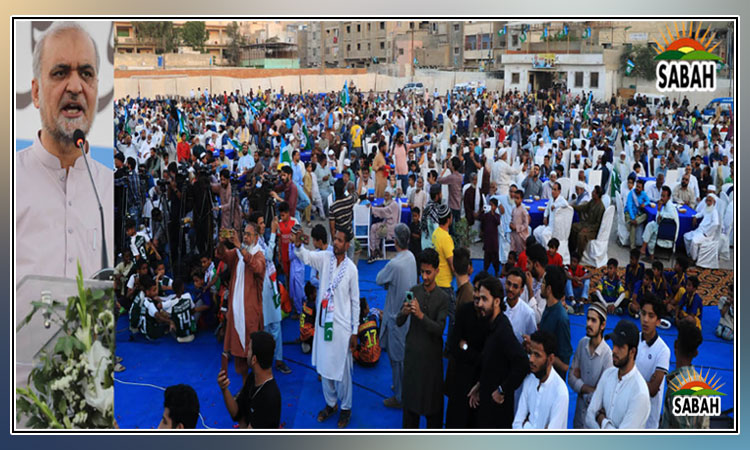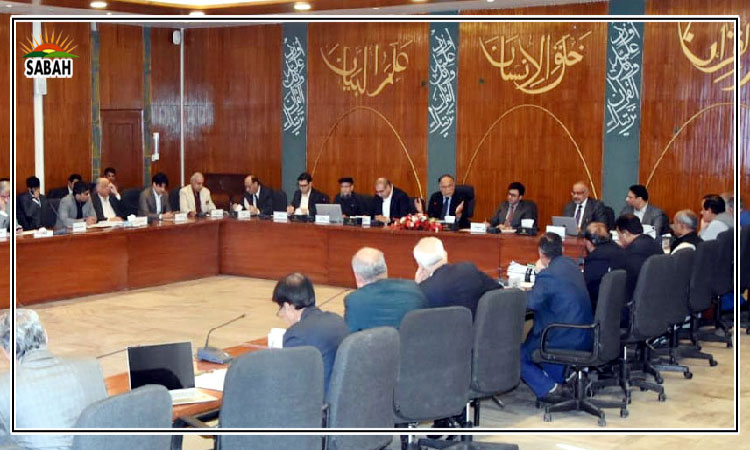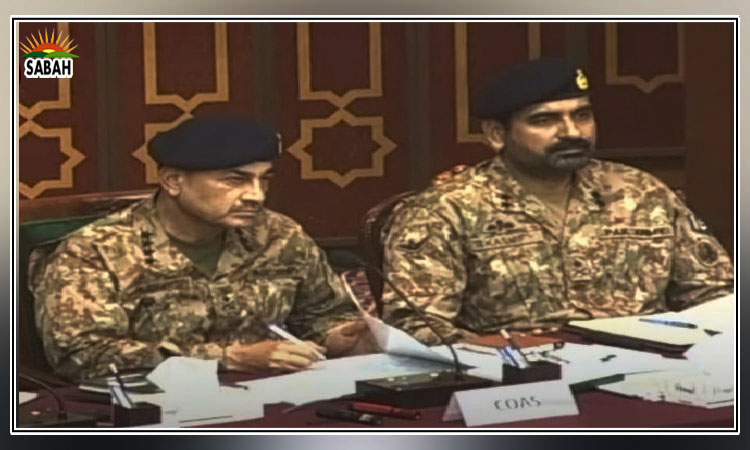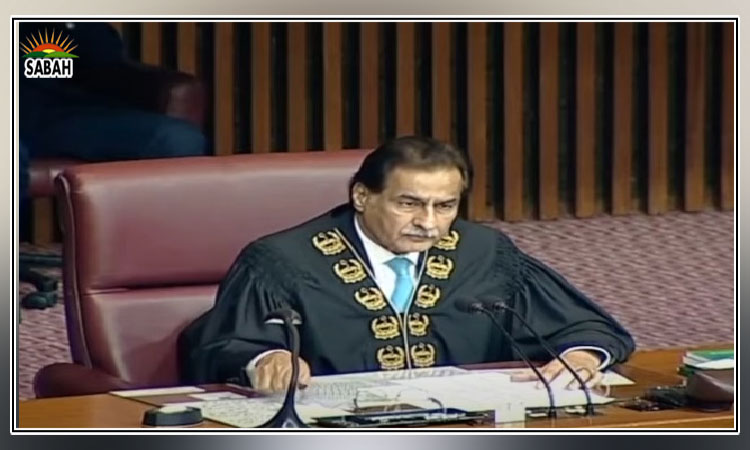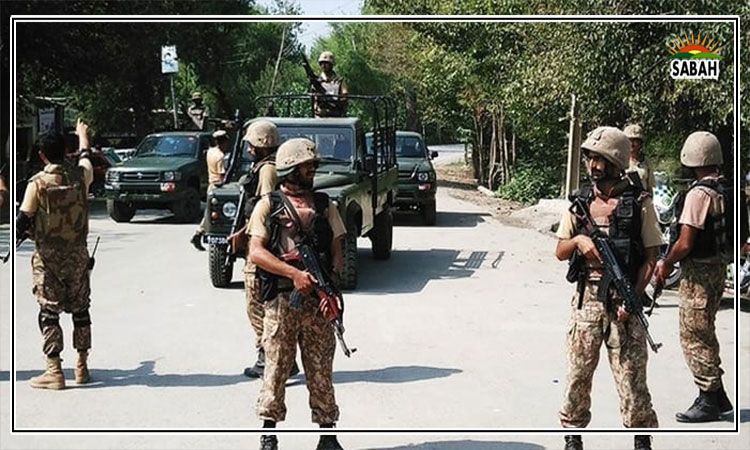A reinvigorated resolve…… Omay Aimen
For the last two decades, the menace of terrorism has been inflicting immense human and material losses in Pakistan leaving its ghastly marks on our society.
Lasting peace remains elusive due to acts of terrorism in some of the restive parts of Khyber Pakhtunkhwa and Balochistan. Even in the wake of lofty claims of stability post-US withdrawal from Afghanistan in 2021, the internal security situation further deteriorated instead of perceived stability by security pundits. It was also claimed that the solution to every cross-border issue rested in the construction of a fence, but these claims were never realized even after spending a colossal amount of funds for this purpose.
After decades of war against terrorism, we are unable to achieve the desired cohesiveness among stakeholders, leading to a lack of national consensus. The divergence in viewpoints and narratives is so immense and complicated that it needs an objective analysis to identify the core issue behind this pervasive terrorism. The nation’s collective response, notably following the Army Public School Peshawar tragedy, marked a pivotal moment in counterterrorism efforts. That momentum, however, waned in subsequent years.
Pakistan is confronted with two different types of terrorism, one perpetrated by jihadi organizations like the TTP, ISKP, Tehreek-e-Jihad-e-Pakistan and Daesh etc, while the other one based upon the linguistic and nationalist fault-lines exploited by organizations like BLA, BLF, BRA etc. Interestingly, both complement each other with a common base in Afghanistan and a unified objective of targeting the Pakistan military and law-enforcement agencies.
The implementation methodology of both types of terrorism stands testimony to the singularity of their conception with different manifestation strategies. The security forces of Pakistan have been engaged in eradicating terrorism for the last two decades. In the last six months, a total of 1063 acts of terror were witnessed despite 22714 intelligence-based operations conducted by security forces (126 operations per day). During these operations, 111 security forces personnel were martyred while 354 terrorists were also killed.
These statistics reflect the fact that, despite massive operations, the country still faces the challenge of terrorism with no respite. Various factors contribute to this stagnation, including ineffective legislation to empower counterterrorism frameworks and insufficient synergy between federal and provincial units.
Relying solely on kinetic efforts cannot win the war against militancy and extremism. Addressing these internal threats is the collective responsibility of all state organs, yet it has been disproportionately placed on the security forces for far too long. Terrorism cannot be seen in isolation; it is executed under the umbrella of a lethal illegal spectrum operative under the broader canvas of smuggling mafias and the narcotics trade.
The security agencies of Pakistan are constantly manning 3348 kilometres of the border along with Afghanistan and Iran. The enormity of the task, the porous nature of the terrain and the highly non-cooperative attitude of the Afghan interim government negatively influence the border management mechanism. This, at times, is exploited by terrorists supported by networks involved in the illegal spectrum.
Just through the daily smuggling of Iranian oil, this specific cartel earns Rs700 million per day. Similarly, on account of the illegal business of tobacco, an enormous amount of Rs300 billion is annually lost to the national exchequer for nonpayment of taxes. These losses to the national economy are resulting in the flourishing of the illegal spectrum abetting terrorism in the country.
The seizure of 1041.4 metric tonnes of narcotics in the last ten months is a testament to the enormity of the challenge this illegal spectrum is posing to the state of Pakistan. These smuggling cartels intend to keep Pakistan as a soft state as it suits their vested interests. They exert their concerted efforts through diversified means to attain the support of a weak judicial system, keep law-enforcement agencies diverted from border management by keeping them entangled in fighting pervasive terrorism across the country, and garner the support of aligned political forces to condemn military operations.
It is this challenging environment under which Operation Azm-e-Istehkam has been strategized to ensure enforcement of the writ of the state with full force and without exception to inspire the revival of a robust economy. The urgency to re-invigorate multi-domain efforts to deliver a decisive blow to the crime-terror nexus and achieve lasting stability is the vision behind Operation Azm-e-Istehkam.
This paradigm will underpin a whole-of-the-system campaign against militancy and violent extremism, rooted in national consensus and aimed at comprehensively eradicating terror. It symbolizes the national resolve for enduring stability and security, distinguishing this campaign from previous ones and instilling hope for a brighter future.
The foremost requirement for fighting terrorism is the strategic clarity of mind regarding the nature of this war. This is our war; it is war for our survival and the survival of our future generations. This needs to be understood and acknowledged above all political differences. A wavering and inconsistent approach will inhibit the lasting success envisaged in Operation Azm-e-Istehkam.
This war needs a synergized state response in the diplomatic, counterterror, legal, socio-economic, and information operations domains.
The writer is a freelance contributor and writes on issues concerning national and regional security. She can be reached at: omayaimen333@gmail.com
Courtesy The News


